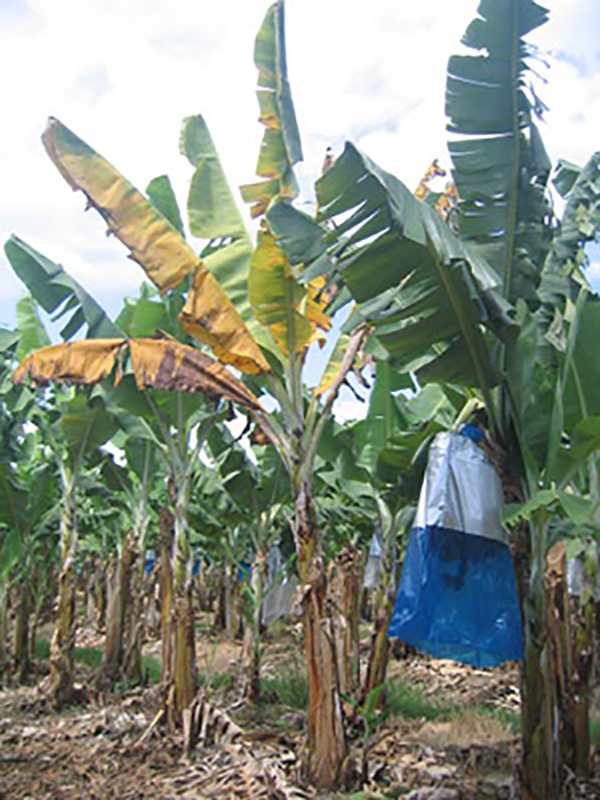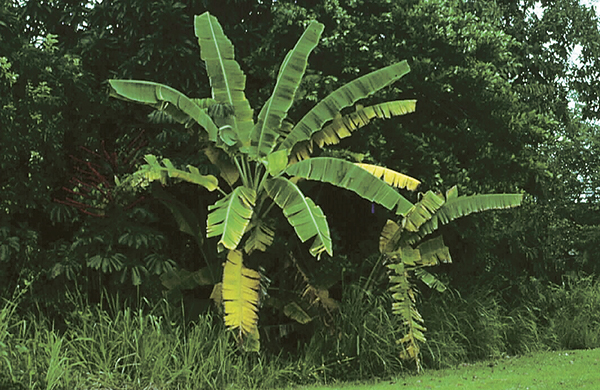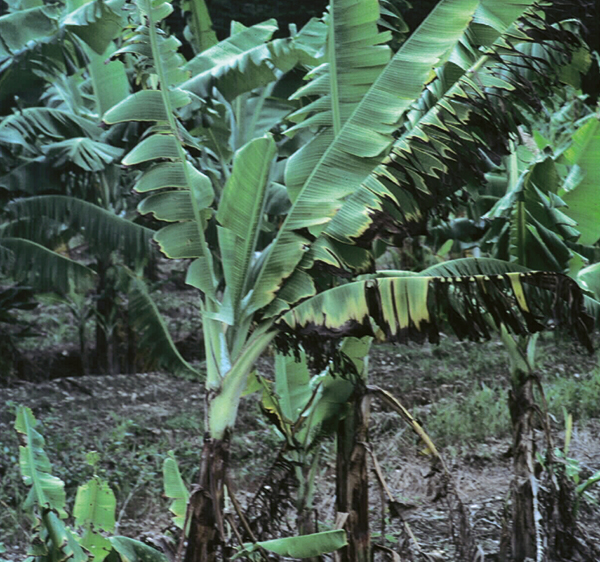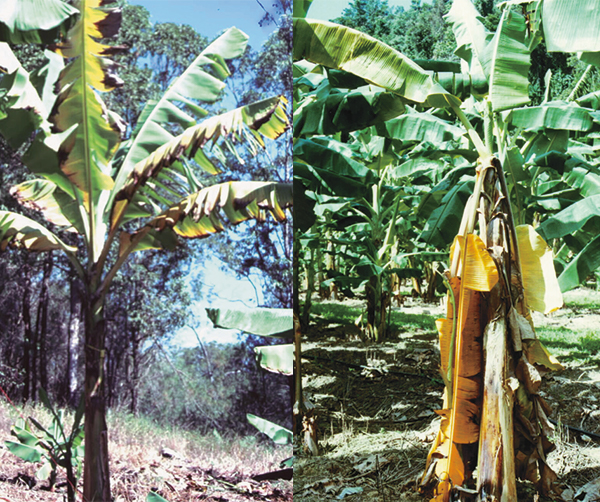Plants turn yellow and die
Bacterial corm rot

Cause: The bacteria Pectobacterium spp. (formerly known as Erwinia spp.) that are common soil inhabitants. Plants that are stressed during the dry season can succumb to invasion during the wet season.
Solution: No chemical treatments are available. Ensure adequate moisture levels are maintained during the dry season and provide good drainage during prolonged wet seasons.
Herbicide damage (glyphosate)

Cause: Glyphosate spray drift onto green parts of the plant. The first symptom is yellowing of leaves.
Solution: No cure for damaged plants. Be extremely careful when using glyphosate.
Panama disease (Fusarium wilt)
Biosecurity Alert
Cause: The fungus Fusarium oxysporum f. sp. cubense which is a soil—borne organism. It is spread in water, soil and planting material. The fungus enters the plant through the roots and blocks the conducting tissue within the plant, resulting in wilting, yellowing of leaves, splitting of pseudostem and death of the plant. There are several “races” of the disease which affect different varieties.
Solution: There is no cure for affected plants. Use only approved planting material and do not plant in previously infested areas.
Biosecurity obligation: Panama is a notifiable disease and you must report any suspicious plants. If you suspect Panama disease you must notify Biosecurity Queensland immediately (13 25 23).
More info:
Queensland Department of Primary Industries
ABGC Grower Support Biosecurity (Grower kit)
Plant Health Australia
More images
Water-logging


